I never thought that making classic eggs benedict with a homemade hollandaise sauce could be so easy, but this 20-minute recipe proved me wrong! Perfectly poached eggs are served on toasted English muffins with juicy slices of Canadian bacon, then slathered with the most delicious eggs benedict sauce that comes together in minutes. Time to make the best brunch right at home!

I used to love going out to brunch for a fancy egg breakfast and a few mimosas, but that can get expensive! My quick and easy recipe for eggs benedict means I can indulge in this classic brunch dish any time. Once I learned how to poach an egg and make a good hollandaise sauce, the rest was simple!
What’s in this Eggs Benedict recipe?
You’ll need egg yolks, lemon juice, butter, and Dijon as the main components of the eggs benedict sauce. Plus more eggs, English muffins, and Canadian bacon to assemble the final dish!
- Eggs: Use whole eggs (yolk and whites) straight from the fridge–it’s best if they are cold. I’ll show you how to poach them for this eggs benedict recipe!
- Egg Yolks: In addition to the whole eggs, you’ll need additional yolks to use as the base of the hollandaise sauce. They thicken the sauce and make it rich and velvety.
- Dijon Mustard: Adds a delicious zing and helps prevent the eggs from scrambling.
- Garlic and Thyme: Fresh garlic and thyme adds flavor to the simple sauce. I don’t recommend substituting dried spices.
- Butter: Use unsalted butter, or else your sauce may become too salty. Fully melt it in the microwave before adding it to the sauce.
- Lemon Juice: Freshly-squeezed juice straight from a lemon works best. The acidity helps prevent the sauce from breaking, plus it adds richness and tanginess to the overall flavor.
- English Muffins: Any type will work as the base for this easy eggs benny. Toast them so they hold up against the sauce.
- Canadian Bacon: Slices of Canadian bacon just need to be warmed to serve.
Variations To Try
- To make this dish gluten-free, simply use a gluten-free English muffin!
- Eggs Benedict are typically served on English muffins, but you can serve it atop biscuits, slices of sourdough toast, or fresh salad greens instead.
- Swap the Canadian bacon for thick strips of bacon, prosciutto, ham, or smoked salmon.
- Be sure to try my Eggs Florentine Benedict too–which uses sautéed spinach instead of bacon for a vegetarian-friendly version.
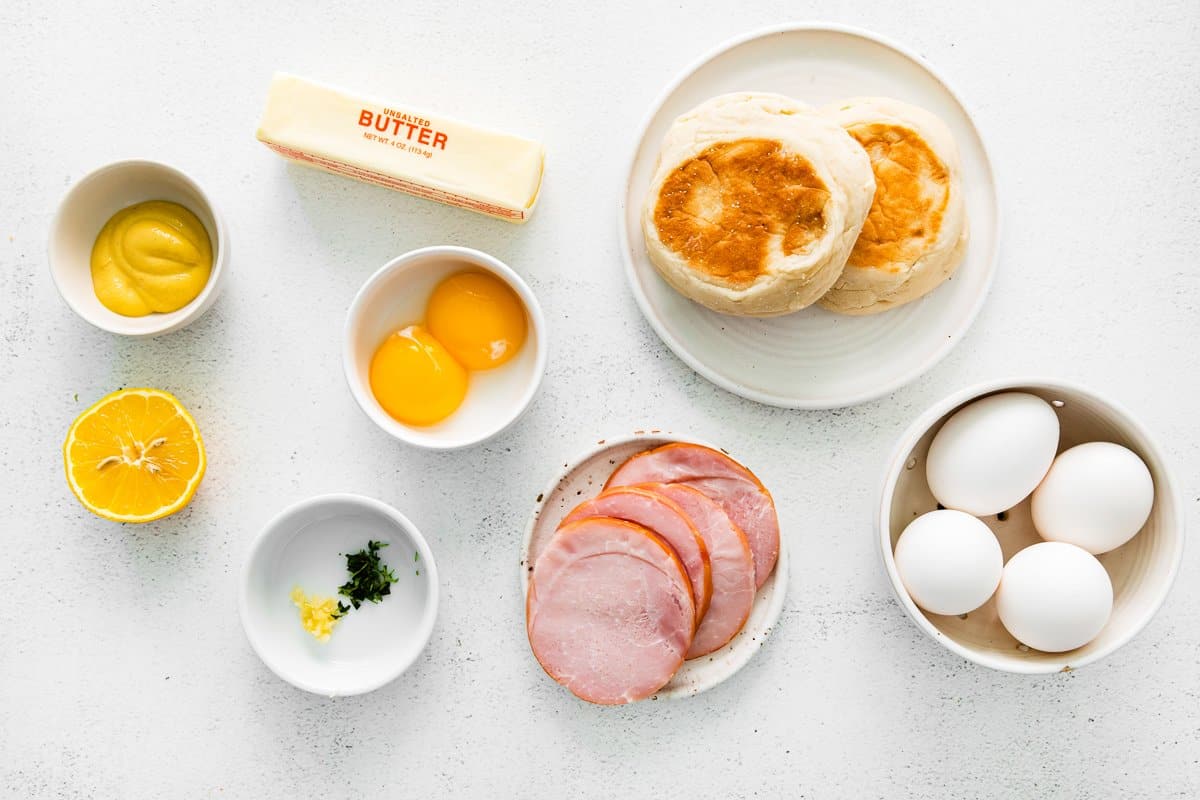

Email This Recipe
Enter your email and we’ll send the recipe directly to you!
How to Make Ahead and Reheat
Poach the eggs up to 2 days in advance and store in the fridge. Reheat them in boiling water for 30-60 seconds when ready to serve.
Make the eggs benedict sauce up to 1 day ahead and gently reheat it to serve. Set it over a very low flame just until it begins to steam, or in the microwave for 10-20 seconds.
Then toast the English muffins, warm up the Canadian bacon, and assemble everything to serve!
How to Store
Store fully-assembled eggs Benedict in an airtight container in the refrigerator for up to 1 day. Store poached eggs in an airtight container in the refrigerator for up to 3 days. Store hollandaise sauce in an airtight container in the fridge for up to 1 day.
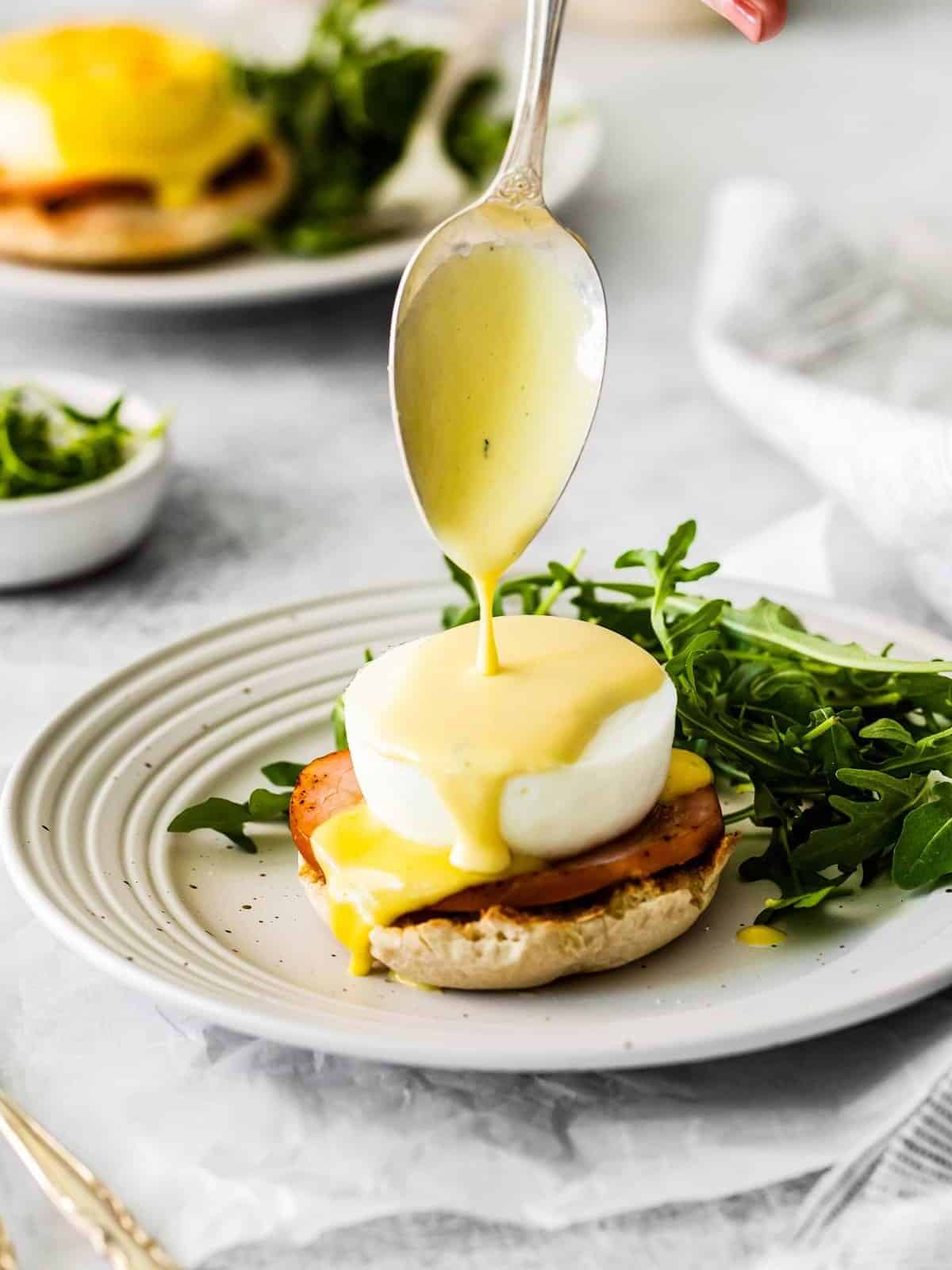
Notes and Tips
- I highly recommend using an egg poaching pan to make this eggs benedict recipe as easy as can be. But if you don’t have one, I’ll tell you how to poach an egg the traditional way too.
- Use the freshest eggs possible for the best results. Fresh egg whites will be thicker and spread less in the water, making it easier to poach eggs correctly.
- Don’t add salt to the water–this will cause the eggs to spread.
- The key to making the hollandaise sauce is to use low heat to combine the ingredients; then remove it from heat completely as soon as it starts to thicken. We don’t want the eggs to scramble!

Eggs Benedict Recipe
Ingredients
For the Hollandaise:
- 2 large egg yolks
- 2 tablespoons Dijon mustard
- 1 clove garlic grated
- ½ teaspoon fresh minced thyme
- ½ cup unsalted butter 1 stick, melted
- 1 lemon juiced
For the Eggs Benedict:
- 2 English muffins
- 4 pieces Canadian bacon
- 4 large eggs straight from the refrigerator
Equipment
- Egg Poaching Pan Optional
- Cast Iron Skillet
Instructions
For the Hollandaise:
- Add the egg yolks, Dijon, garlic, and thyme to a small saucepan set over medium-low heat. Whisk to combine and slowly stream in the melted butter, whisking constantly.2 large egg yolks, 2 tablespoons Dijon mustard, 1 clove garlic, ½ teaspoon fresh minced thyme, ½ cup unsalted butter

- Cook, whisking often, just until the sauce starts to thicken, about 1-2 minutes. Remove the sauce from the heat and whisk in the lemon juice. Season with salt and pepper to taste. If the sauce thickens too much, add hot water, 1 tablespoon at a time, and whisk until you achieve your desired consistency. If the sauce starts to break, remove it from the heat immediately and add an ice cube to the bowl. Whisk vigorously until the sauce comes back together. If the sauce does not come back together, discard and start over.1 lemon

For the Eggs Benedict:
- Divide the English muffins in half and toast them to your desired doneness. Keep them warm on a baking sheet in a 200°F oven until ready to serve.2 English muffins

- Heat a large cast skillet over medium heat. When the skillet is hot, add the Canadian bacon and fry until warmed through and beginning to crisp, about 1 minute per side. Place one piece of Canadian bacon on each piece of English muffin and put them both back into the oven to stay warm until the eggs are finished.4 pieces Canadian bacon

- Recommended Method: If you have an egg poaching pan (pictured), follow the manufacturer’s instructions for cooking an egg. Most pans need to be filled halfway with water and brought to a simmer over medium heat. Grease the cups with nonstick cooking spray and add one egg to each cup. Place the cups in the water, cover, and cook for 3 minutes.4 large eggs

- Alternative Method: If you do not have an egg poaching pan, fill a large, high-sided skillet with water and add 1 tablespoon of white wine vinegar. Bring the water to a gentle simmer. Crack an egg into a small bowl and then drop it into the water. Swirl a spoon gently around the egg to create a small vortex–this will help the egg white shape around the yolk. Repeat with as many eggs as will fit. Cook for 3 minutes.
- Remove the eggs with a slotted spoon and dab them gently with a paper towel to remove any excess water.
- Place a poached egg on top of each english muffin and season it lightly with salt and pepper. Drizzle over the hollandaise and serve immediately.

Notes
- Use an egg poaching pan if you have one.
- Use the freshest eggs possible. Fresh egg whites will be thicker and spread less in the water.
- Don’t add salt to the water. This will cause the eggs to spread more.
- If you’re having trouble poaching more than 1 egg at a time, just cook them one at a time. Poaching eggs takes time to master.
- To reheat the sauce, set it over a very low flame and heat just until it begins to steam– overheating can cause the sauce to break.
- You can also reheat the sauce in the microwave for 10-20 seconds.
How to Make Eggs Benedict and Hollandaise Sauce Step by Step
Combine Sauce Ingredients: Set a small saucepan over medium-low heat. Then add 2 large egg yolks, 2 tablespoons of Dijon mustard, 1 clove of freshly-grated garlic, anode ½ teaspoon fresh minced thyme. Whisk to combine ingredients; then slowly stream in ½ cup of melted butter, whisking constantly.
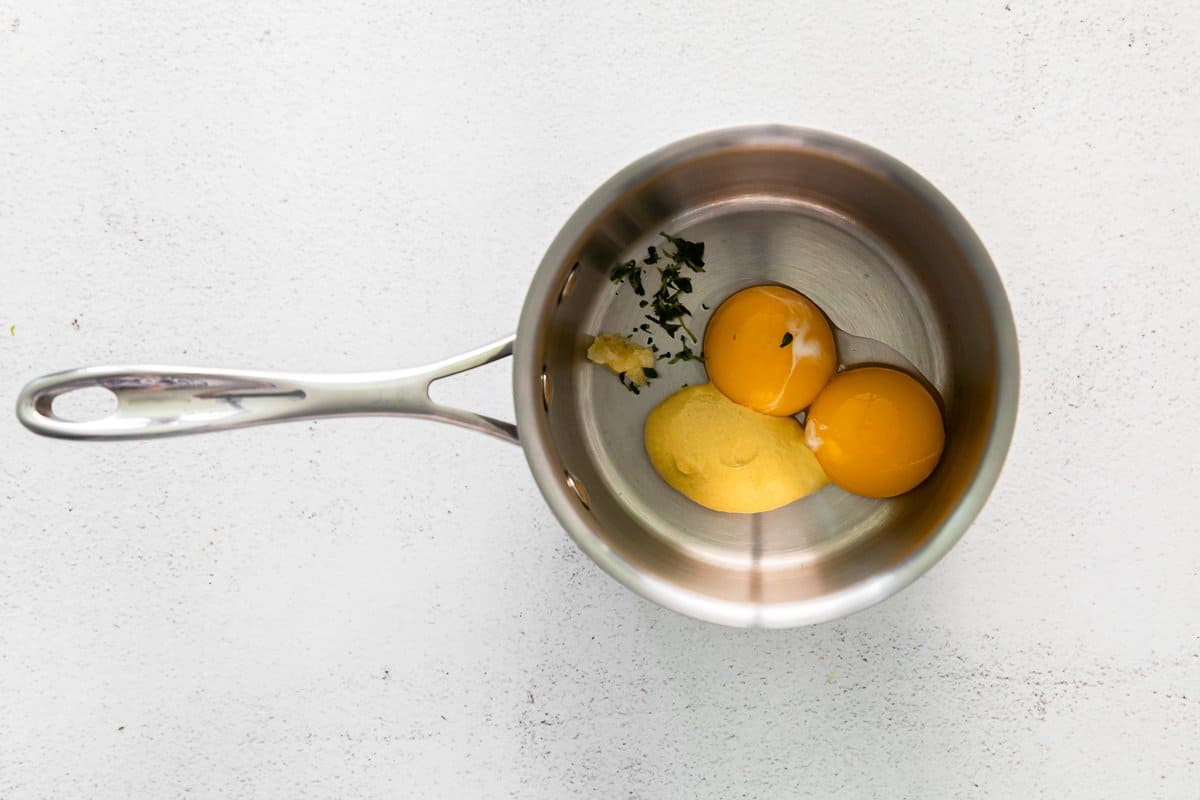
Make the Hollandaise Sauce: Cook the sauce, whisking often, just until it starts to thicken, about 1-2 minutes. Promptly remove it from heat, and whisk in the juice of 1 lemon. Then season with salt and pepper to taste.
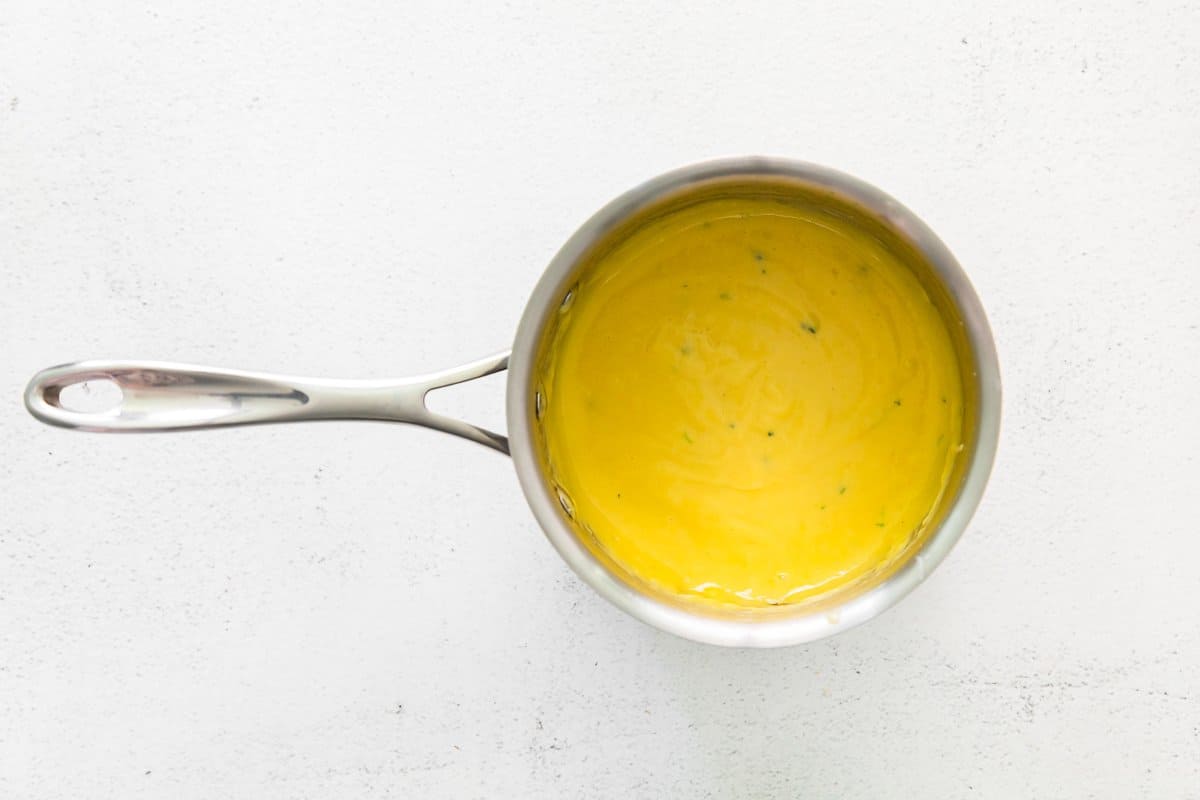
Troubleshooting the Sauce: If the eggs benedict sauce thickens too much; add hot water, 1 tablespoon at a time, and whisk until you achieve your desired consistency.
If the sauce starts to break; immediately remove it from heat and add an ice cube, whisking vigorously until the sauce comes back together. If the sauce does not come back together, discard and start over.
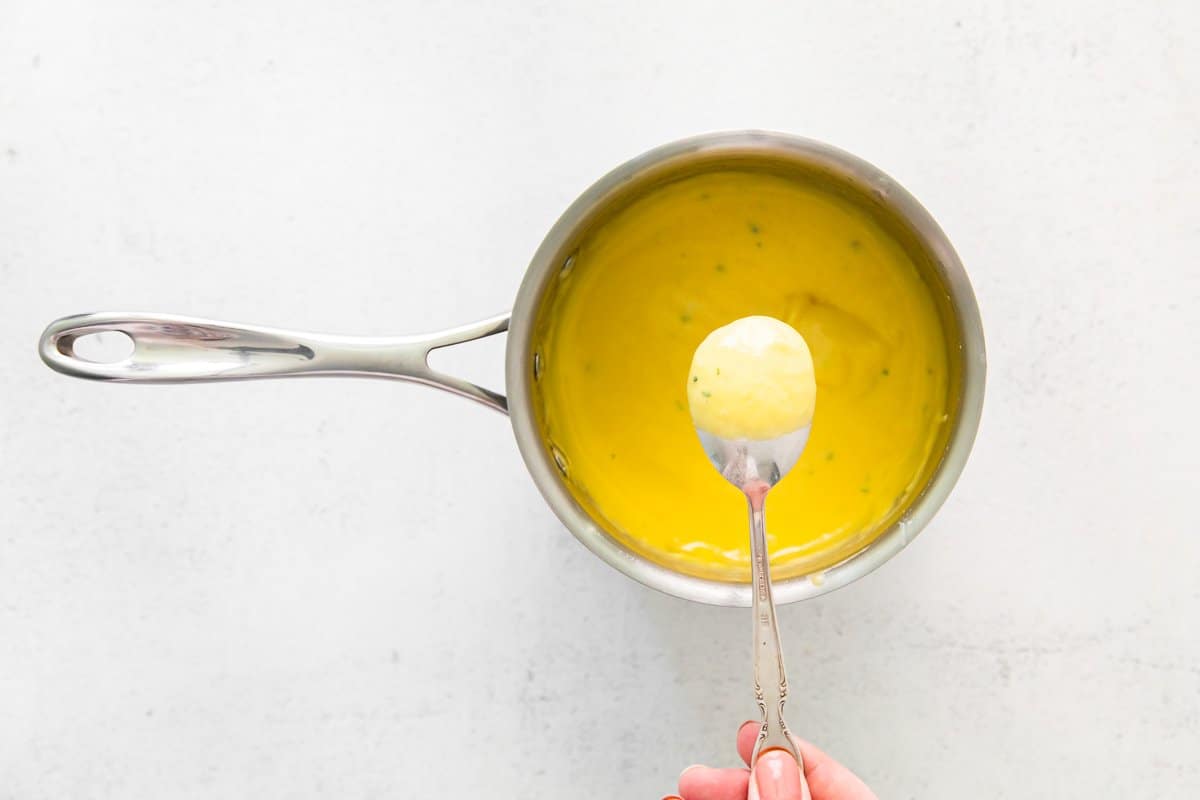
Toast the English Muffins: Cut 2 English muffins in half, and toast them to your desired doneness. If needed, keep them warm on a baking sheet in a 200°F oven until ready to serve.
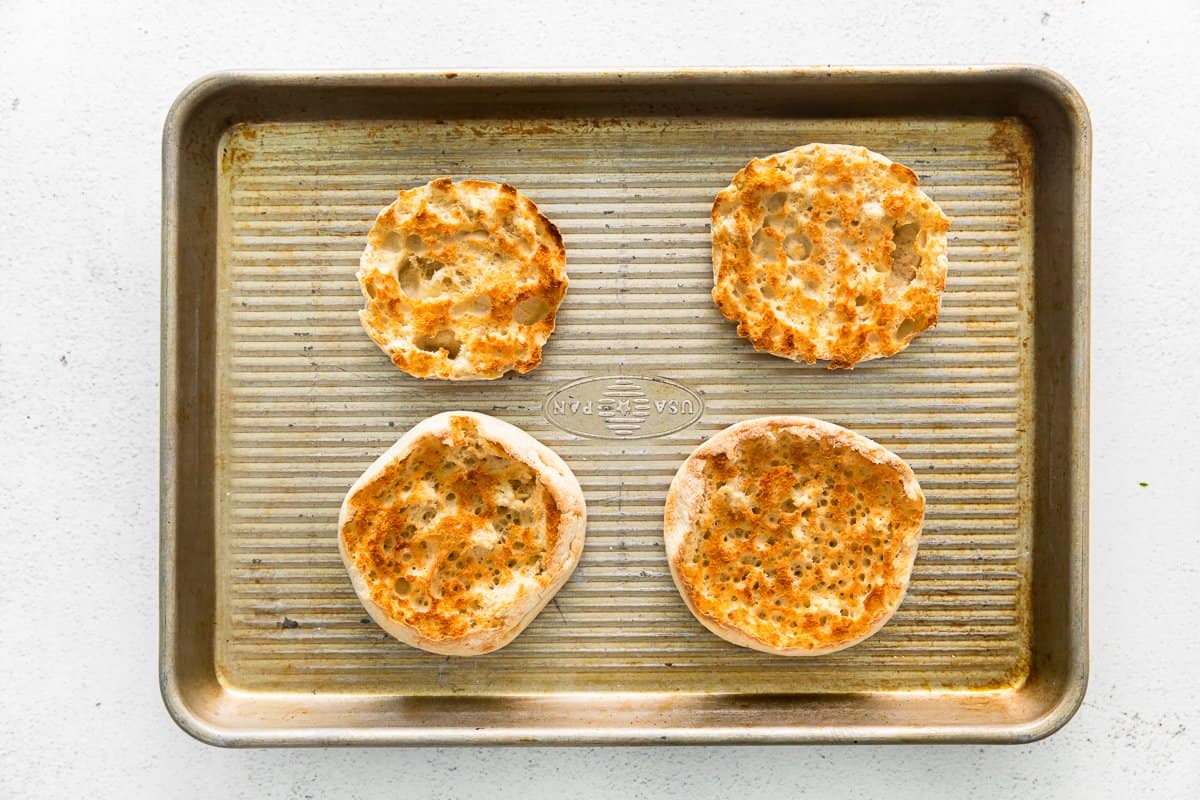
Warm the Canadian Bacon: Heat a large cast iron skillet over medium heat. When the skillet is hot, add 4 pieces of Canadian bacon; fry until warmed through and beginning to crisp, about 1 minute per side.
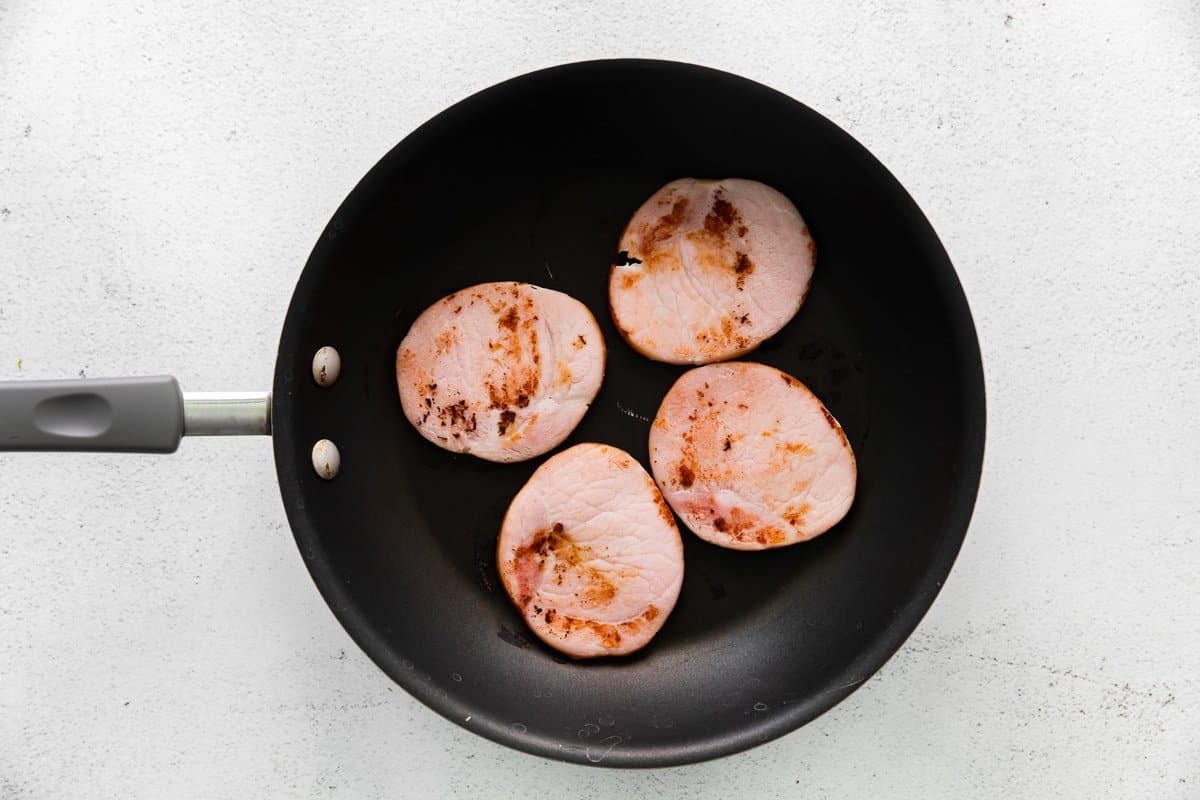
Keep it Warm: Place one piece of Canadian bacon on each piece of English muffin, and put them both back into the oven to stay warm until the eggs are finished.
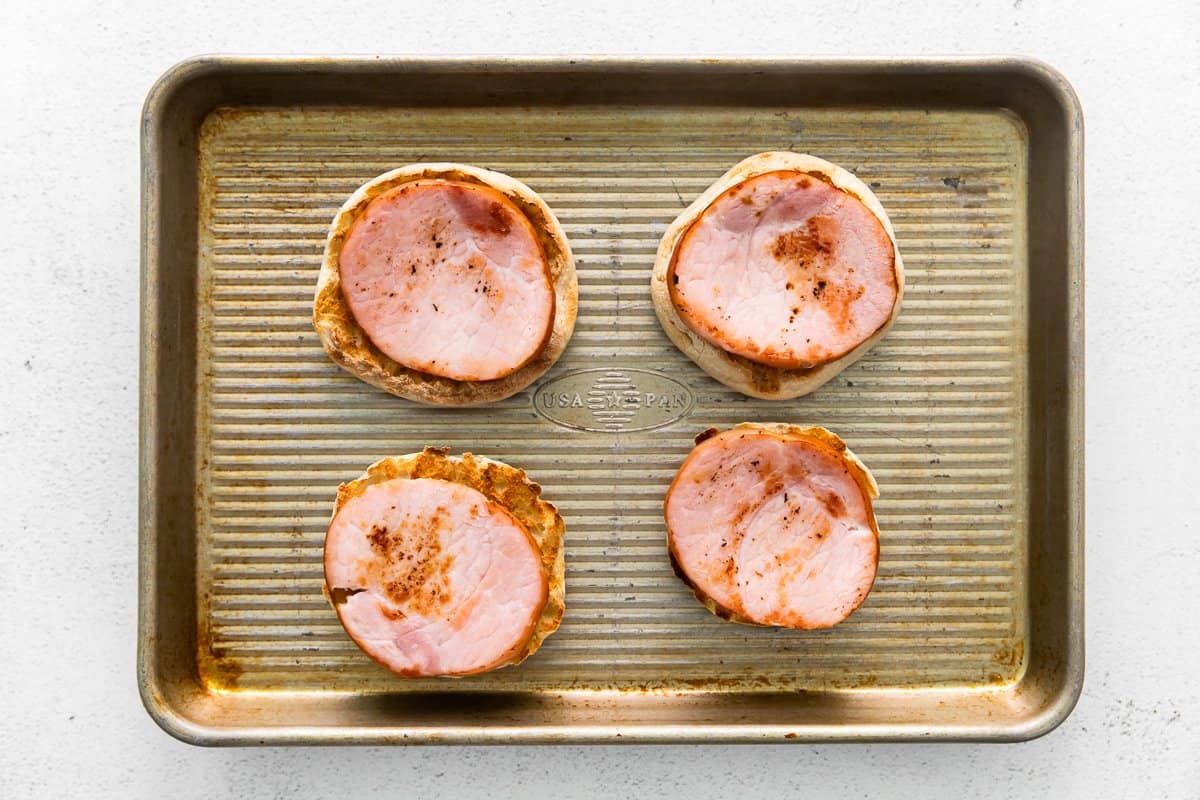
Cook the Eggs: If you have an egg poaching pan (pictured), follow the manufacturer’s instructions to cook your eggs for eggs benedict. Most pans need to be filled halfway with water and brought to a simmer over medium heat. Grease the cups with nonstick cooking spray and add 1 egg to each cup.
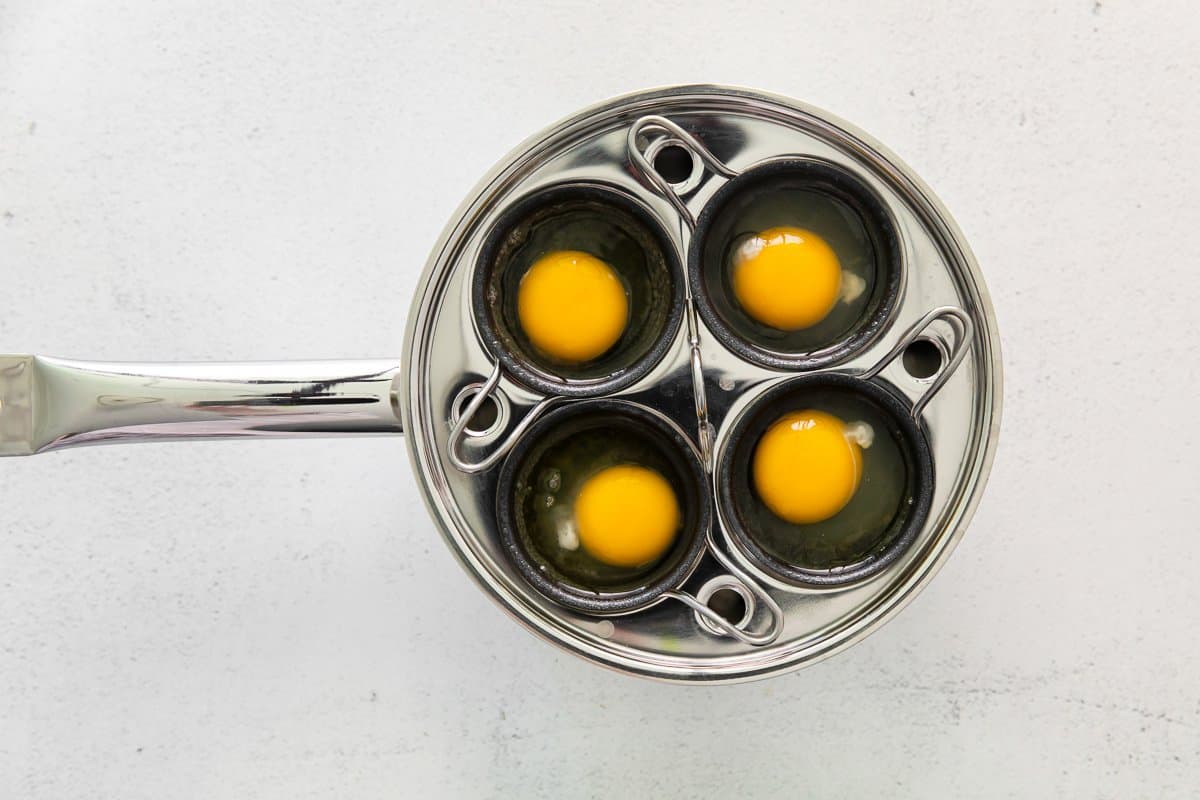
Finish Poaching: Place the cups in the water, cover, and cook for 3 minutes. Remove the poached eggs with a slotted spoon, and dab them gently with a paper towel to remove any excess water.
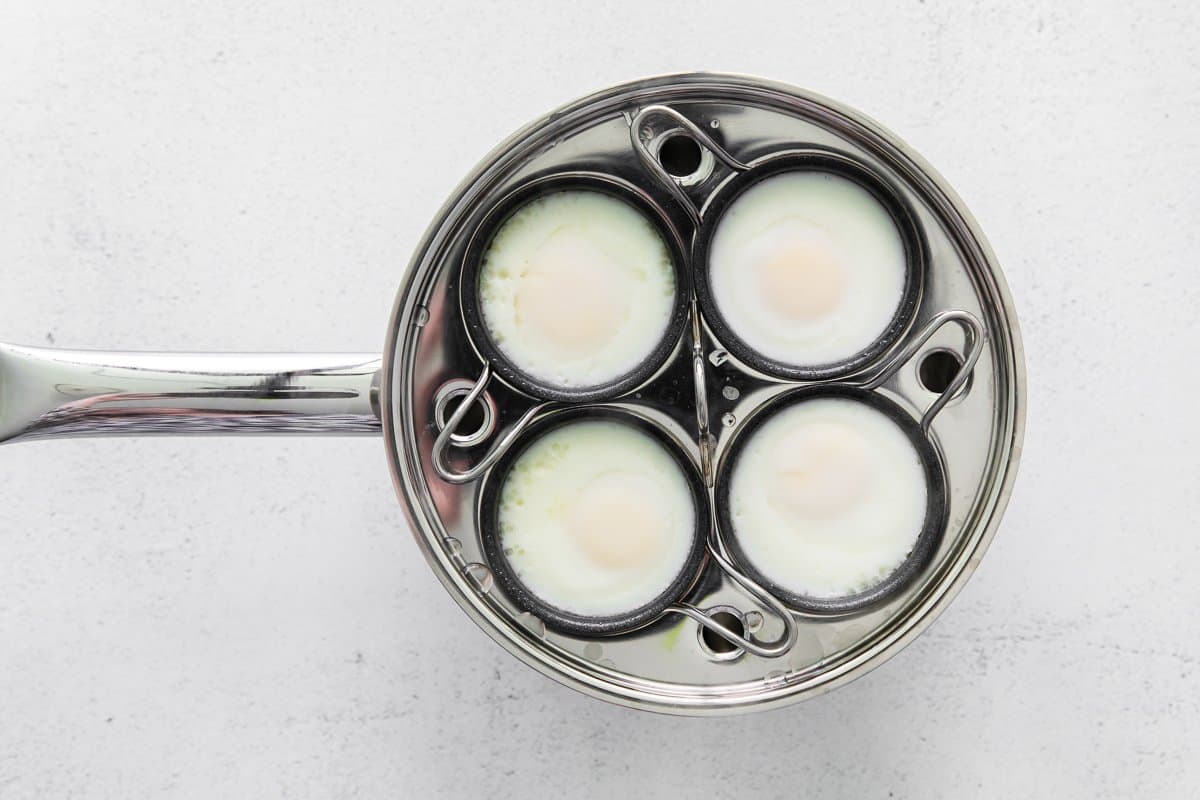
*Alternative Poaching Method: If you do not have an egg poaching pan; fill a large, high-sided skillet with water and add 1 tablespoon of white wine vinegar, then bring the water to a gentle simmer. First, crack an egg into a small bowl, then drop it into the water. Swirl a spoon gently around the egg to create a small vortex–this will help the egg white encircle the yolk. Cook for 3 minutes, then remove with a slotted spoon.
Assemble: To assemble the eggs benedict, place 1 poached egg on top of each piece of English muffin/Canadian bacon, and season it lightly with salt and pepper. Then drizzle the hollandaise sauce over each one, and serve immediately.
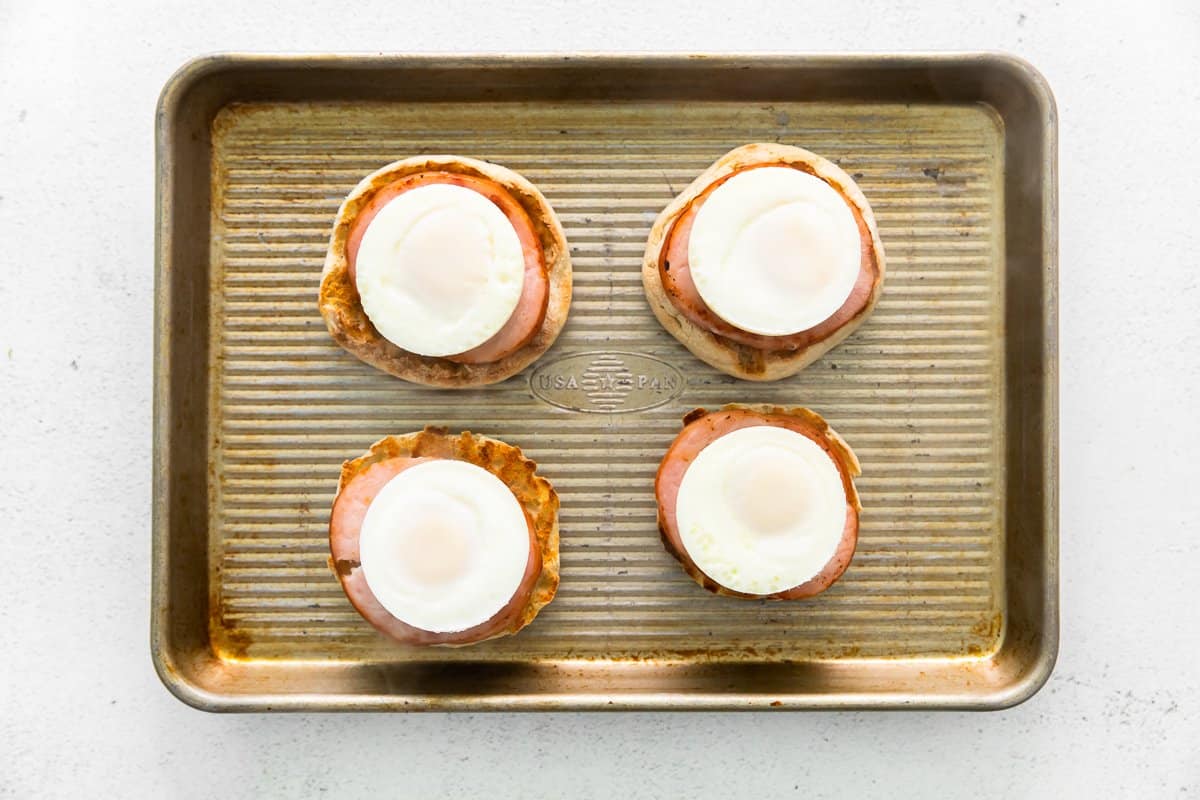
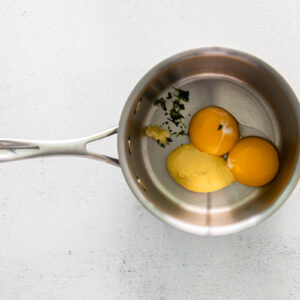
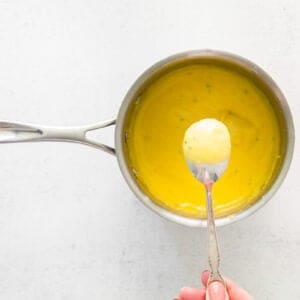
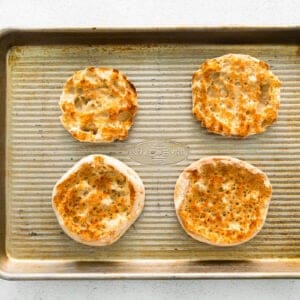
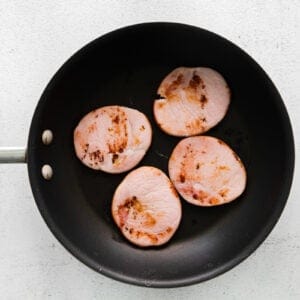
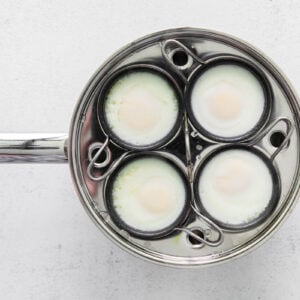
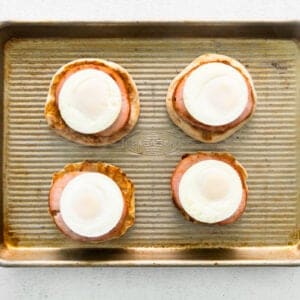
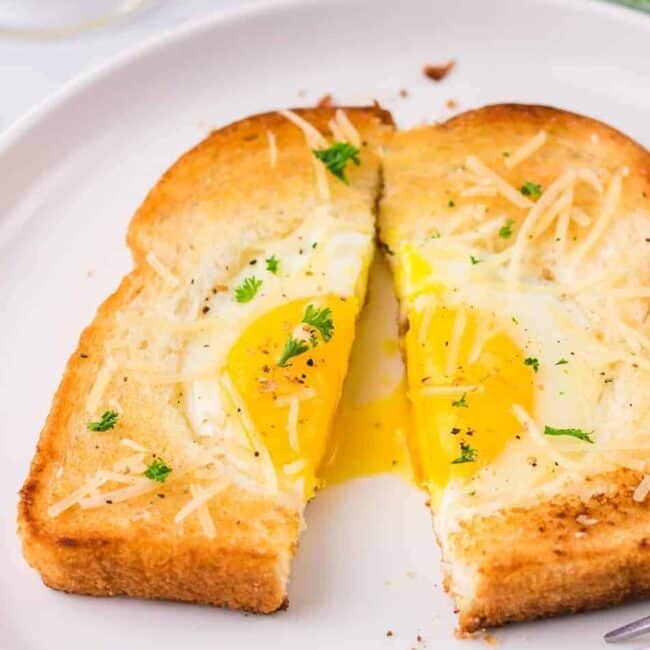
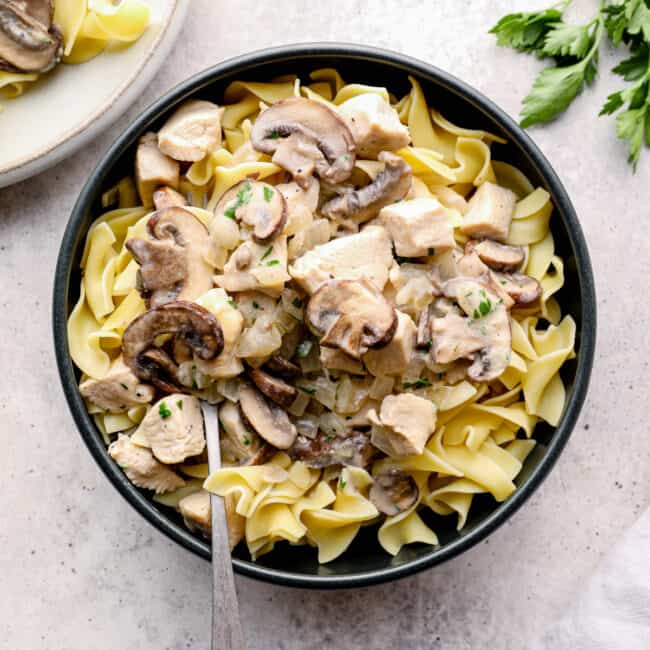


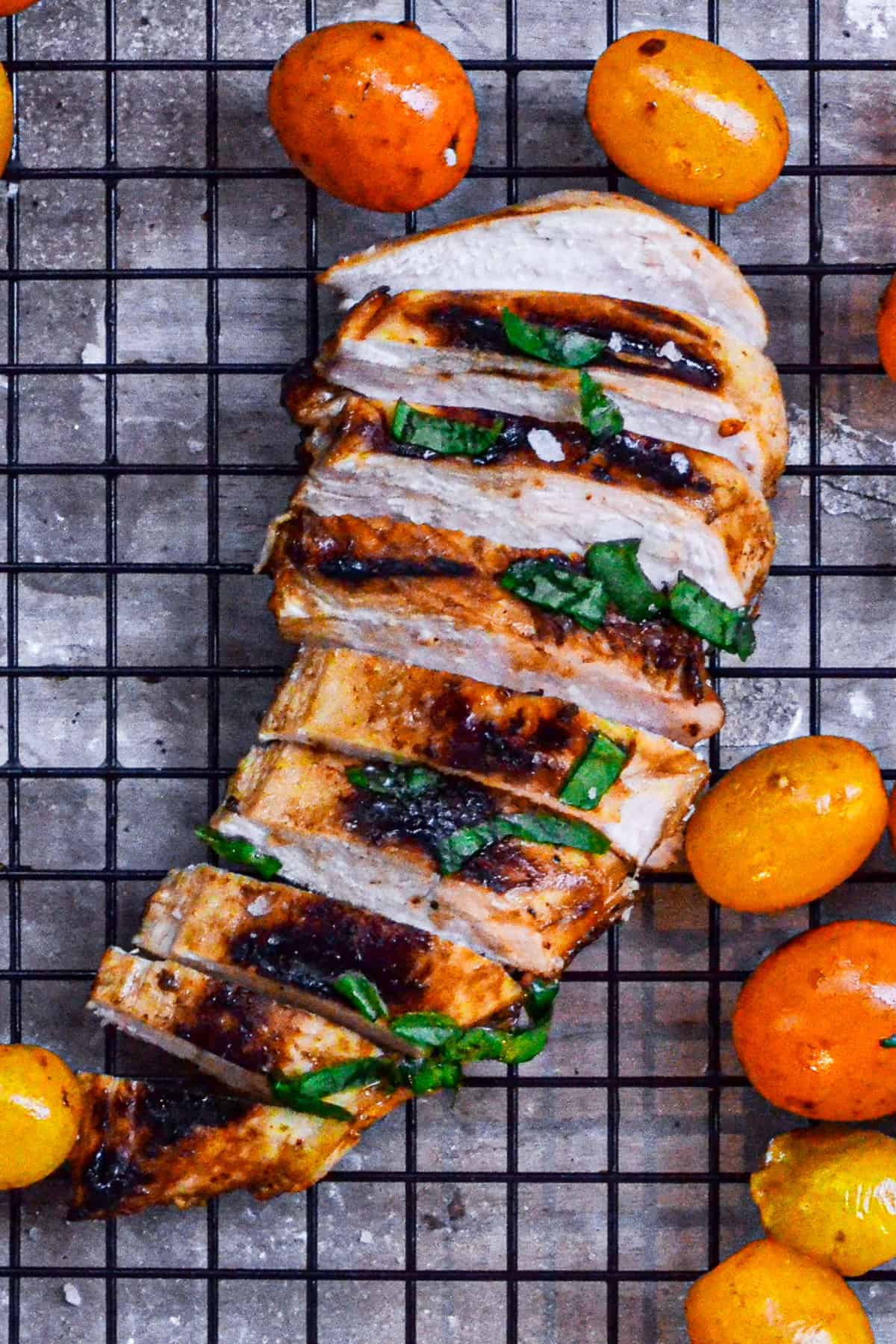


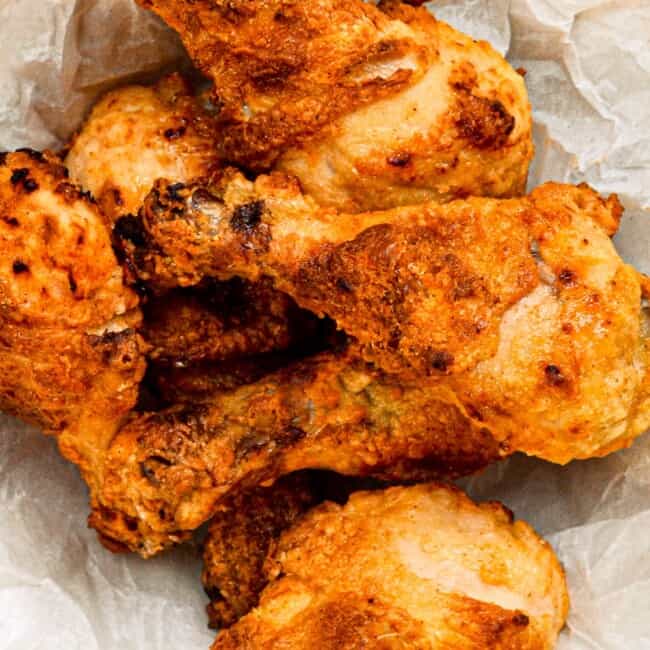


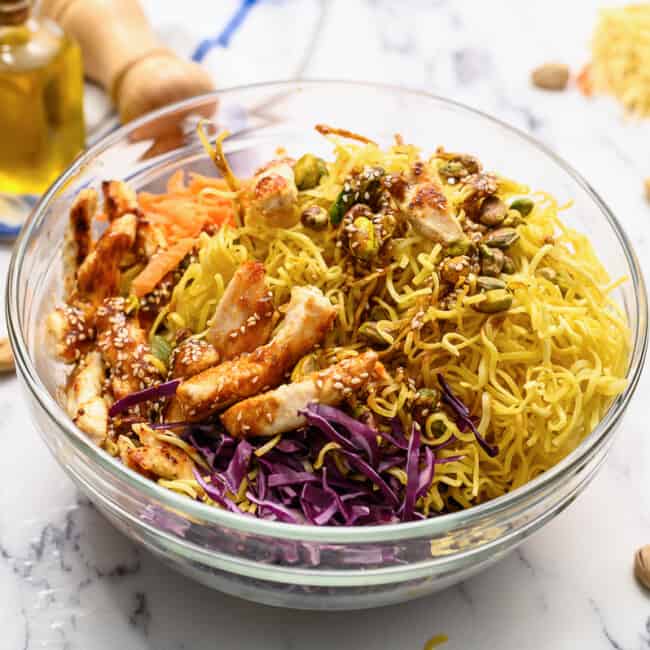



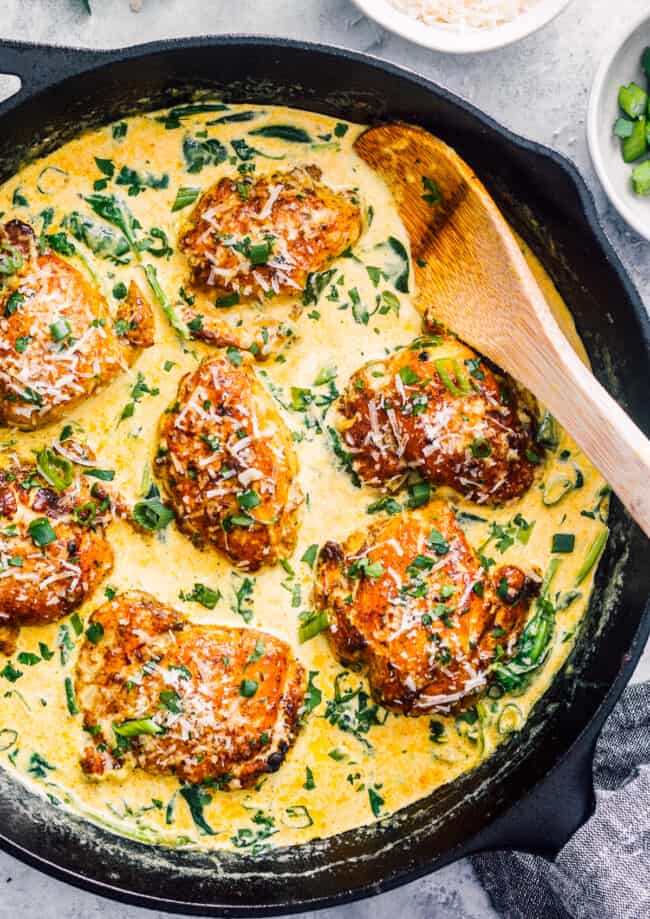

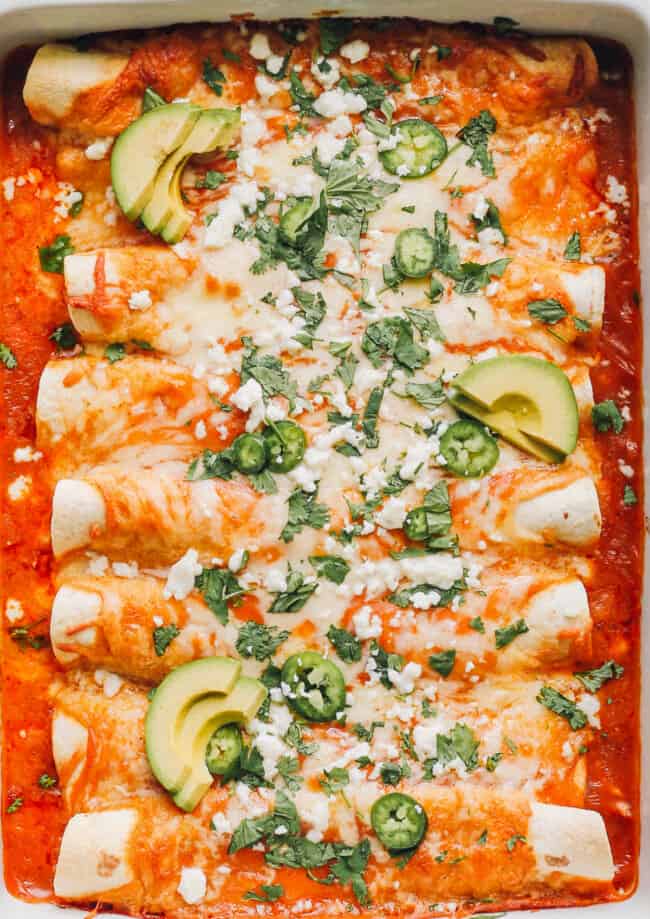
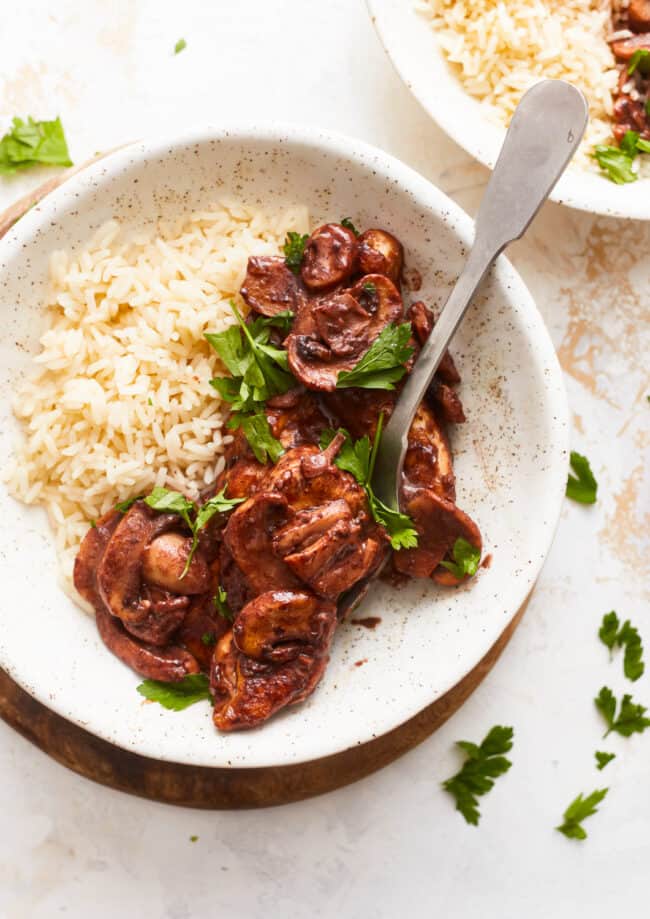


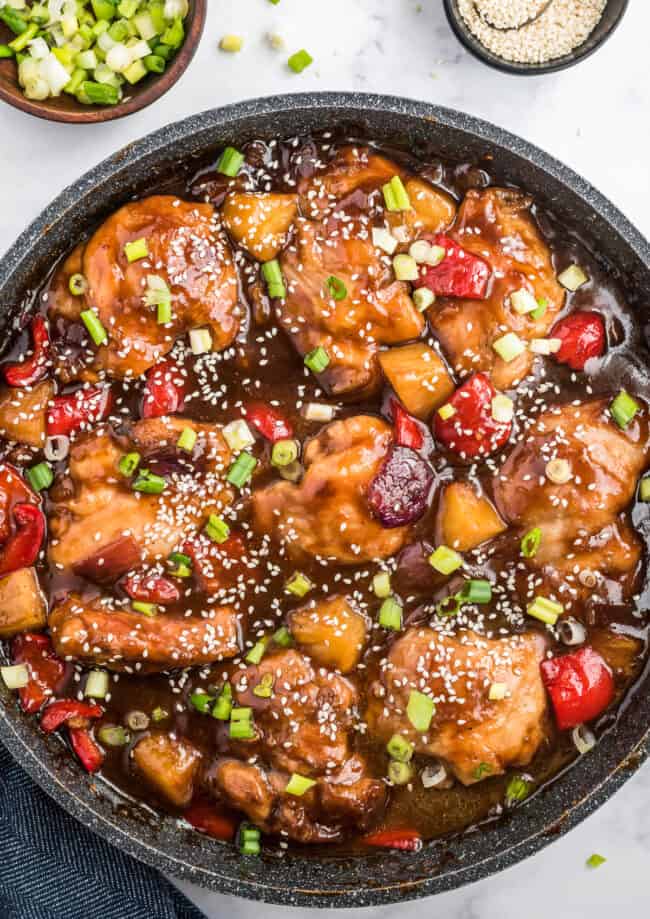
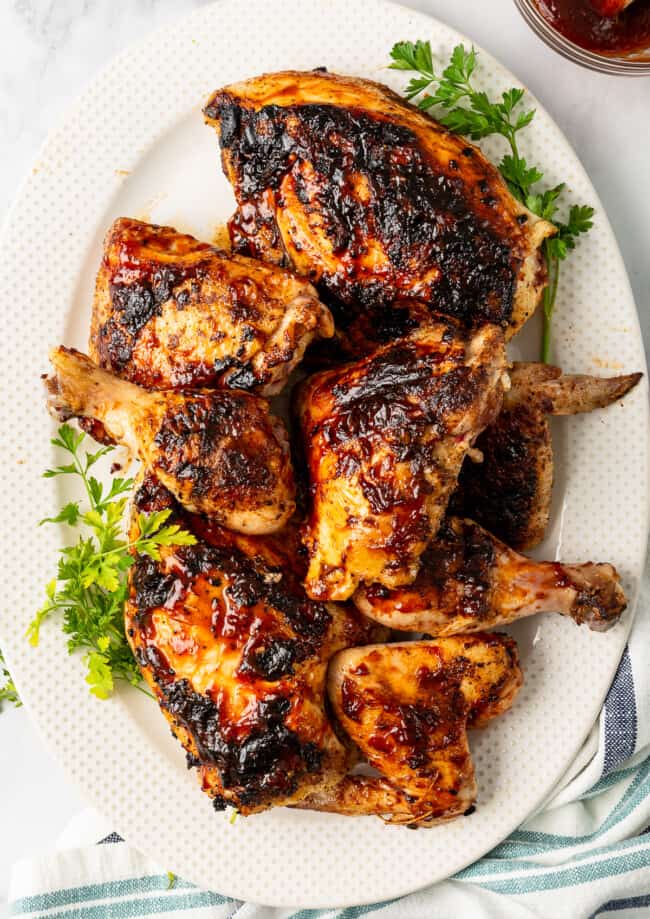
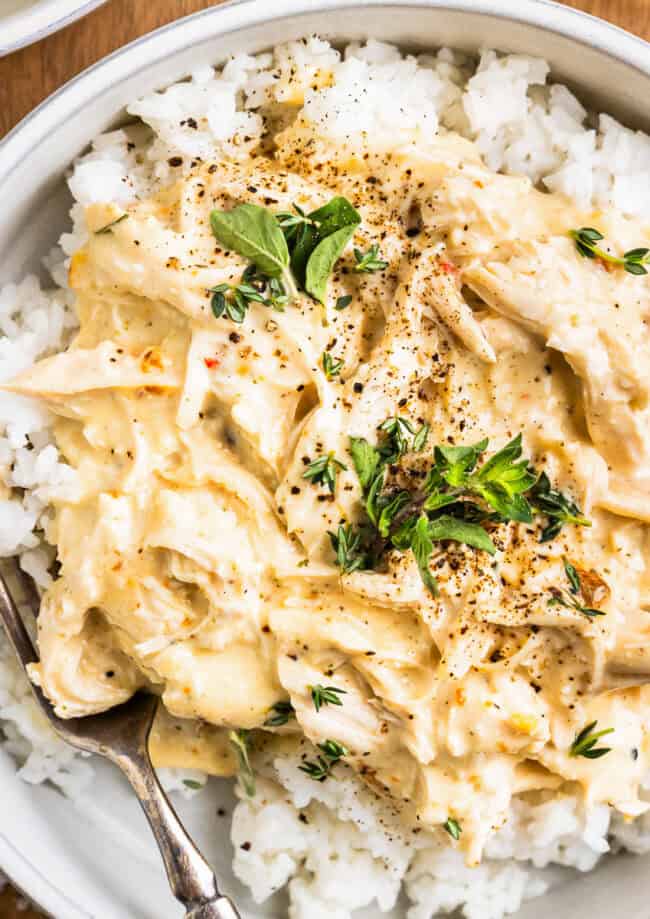





Leave a Review